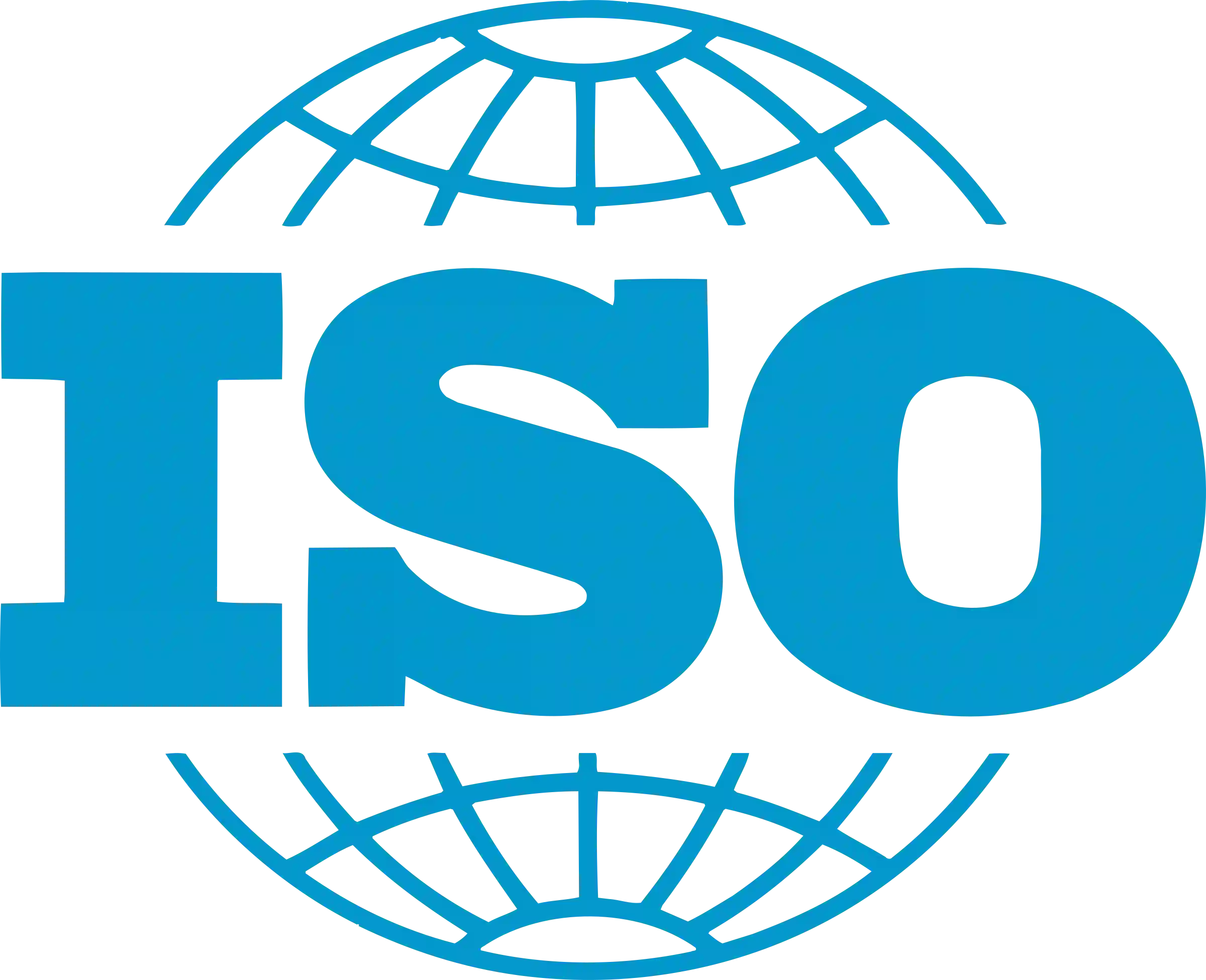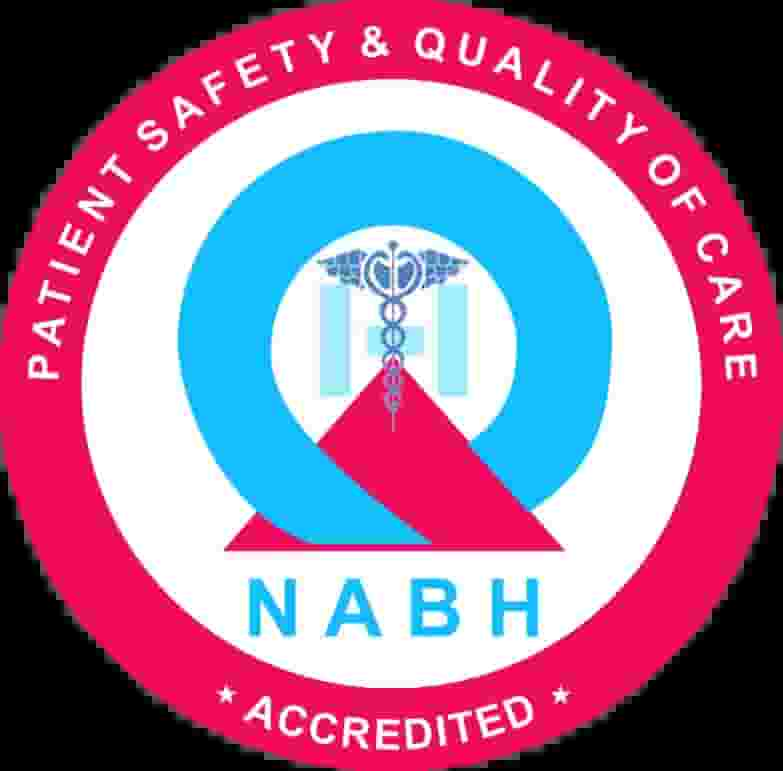
The Impact of Nanotechnology on Medical Procedures
18 Oct, 2023
 Healthtrip Team
Healthtrip TeamNanotechnology
Nanotechnology, at its core, involves working with structures and devices at the nanometer scale, where one nanometer is equivalent to one billionth of a meter. This field of science and engineering has found groundbreaking applications in various sectors, and one of the most promising realms is its impact on medicine.
Transform Your Beauty, Boost Your Confidence
Find the right cosmetic procedure for your needs.

We specialize in a wide range of cosmetic procedures

Nanotechnology delves into the manipulation and utilization of materials and devices at the molecular and atomic levels. In simpler terms, it's about working with incredibly tiny structures that often measure less than 100 nanometers. This ability to engineer and control matter on such a minuscule scale opens up new possibilities and has given birth to the field of nanomedicine.
Nanotechnology in Medicine
Nanotechnology in medicine is like a tiny revolution happening within our bodies. Researchers and medical professionals are exploring ways to leverage nanoscale tools and materials to diagnose, treat, and monitor diseases with unprecedented precision. This involves everything from engineered nanoparticles to nanorobotics, creating a new frontier in healthcare.
The global market for nanotechnology in healthcare is expected to reach $290.8 billion by 2027. [Source: Grand View Research]
Importance of Nanotechnology in Medical Procedures
Most popular procedures in India
Total Hip Replacemen
Upto 80% off
90% Rated
Satisfactory

Total Hip Replacemen
Upto 80% off
90% Rated
Satisfactory

Total Hip Replacemen
Upto 80% off
90% Rated
Satisfactory

ANGIOGRAM
Upto 80% off
90% Rated
Satisfactory

ASD Closure
Upto 80% off
90% Rated
Satisfactory

Why does nanotechnology matter in the realm of medical procedures? The answer lies in its potential to revolutionize the way we approach healthcare. Nanotechnology enables us to target specific cells or even molecules, paving the way for highly efficient and personalized medical treatments. This precision not only enhances the effectiveness of procedures but also minimizes side effects, offering a new level of patient care.
Nanotechnology is being used to develop new methods for diagnosing and treating cancer, heart disease, and other chronic diseases. [Source: National Cancer Institute]
Nanotechnology is also being used to develop new drug delivery systems that can deliver drugs more precisely and effectively. [Source: National Institutes of Health]
In the upcoming sections, we'll explore the historical development of nanotechnology in medicine, the tools and techniques involved, and the transformative impact it has on various medical procedures. From targeted therapies to nanorobotics, the influence of nanotechnology in the medical field is vast and holds immense promise for the future of healthcare.
Nanotechnology Tools and Techniques in Medical Procedures
A. Nanoscale Imaging
1. Scanning Tunneling Microscopy (STM)
- STM is a powerful imaging technique that allows scientists to visualize surfaces at the atomic level. It involves scanning a sharp metal tip over the surface, measuring the flow of electrons, and creating detailed three-dimensional images.
- In medicine, STM aids in understanding cellular structures and surfaces, providing insights into the nanoscale features of biological entities.
- AFM is another imaging method that works by measuring the forces between a sharp tip and the surface of a sample. It is highly versatile and can be used to examine biological samples in various environments.
- Medical Application: AFM plays a crucial role in understanding the mechanical properties of cells and tissues, contributing to advancements in diagnostics and tissue engineering.
B. Drug Delivery Systems
1. Nanoparticles
- Nanoparticles are tiny particles, often ranging from 1 to 100 nanometers, that can carry drugs to specific cells or tissues. Their small size allows for enhanced bioavailability and targeted drug delivery.
- Medical Application: Nanoparticles are utilized to improve the efficacy of drug delivery, reducing side effects and increasing the concentration of drugs at the target site.
- Liposomes are vesicles composed of lipid bilayers, mimicking cell membranes. They can encapsulate drugs and transport them to specific locations in the body.
- Medical Application: Liposomes are used to encapsulate both hydrophobic and hydrophilic drugs, aiding in controlled drug release and reducing toxicity.
- Nanotubes are cylindrical structures with diameters in the nanometer range. Carbon nanotubes, for instance, have unique properties that make them suitable for drug delivery applications.
- Medical Application: Nanotubes are explored for their ability to transport drugs directly into cells and tissues, offering a promising avenue for targeted therapies.
C. Diagnostic Applications
1. Nanosensors
- Nanosensors are devices that can detect and respond to specific biological markers at the nanoscale. They are crucial for early disease detection.
- Medical Application: Nanosensors are employed in diagnostics, providing real-time information about biomarkers associated with various diseases, facilitating early and accurate diagnosis.
2. Quantum Dots
- Quantum dots are semiconductor nanocrystals that emit specific wavelengths of light. They are used as contrast agents in imaging techniques.
- Medical Application: Quantum dots enhance the precision of medical imaging, enabling detailed visualization of biological structures and improving the accuracy of diagnostic procedures.
3. Nanoprobes
Nanoprobes are nanoscale tools designed for imaging and detecting specific molecules or structures within the body.
Medical Application: Nanoprobes are instrumental in advanced imaging technologies, providing detailed information for diagnostic purposes, such as identifying cancerous cells or monitoring disease progression.
These nanoscale tools and techniques represent a cutting-edge frontier in medical science, promising innovative solutions for diagnostics, drug delivery, and imaging procedures. Their application marks a significant leap toward personalized and highly efficient medical interventions.
Impact on Surgery and Treatment Procedures
A. Targeted Therapy
1. Precision Medicine
- Precision medicine involves tailoring medical treatment and interventions to the individual characteristics of each patient. In the context of nanotechnology, it refers to the ability to target specific cells or molecular pathways with a high degree of accuracy.
- Impact: Precision medicine, enabled by nanotechnology, ensures that treatments are more effective, minimizing collateral damage to healthy tissues. This approach is particularly significant in the treatment of cancer and other complex diseases.
2. Personalized Treatment Plans
- Personalized treatment plans leverage patient-specific data, including genetic information, to design interventions that are uniquely suited to an individual's biology.
- Impact: Nanotechnology allows for the creation of personalized drug delivery systems, adjusting dosages and release profiles based on the patient's unique physiological characteristics. This tailored approach enhances treatment efficacy while reducing adverse effects
B. Nanorobotics in Surgery
1. Remote Surgery
Nanorobotics involves the use of nanoscale robots or devices for medical purposes. In remote surgery, surgeons can manipulate these tiny robots to perform procedures inside the body from a distant location.
Impact: Remote surgery facilitated by nanorobotics allows for minimally invasive procedures, reducing the need for large incisions. This results in faster recovery times, decreased risk of infection, and improved patient outcomes.
2. In Vivo Procedures
In vivo procedures involve performing medical interventions directly within the living organism, often using nanorobots to target specific areas or deliver treatments.
Impact: Nanorobots enable in vivo procedures with high precision, reaching targeted sites within the body that might be challenging to access through traditional means. This can lead to more effective treatment of diseases at their source.
C. Enhanced Imaging Technologies
1. Contrast Agents
- Contrast agents, often based on nanomaterials, enhance the visibility of specific structures or tissues in medical imaging.
- Impact: Nanotechnology-derived contrast agents improve the resolution and accuracy of imaging techniques, allowing for better visualization of anatomical details. This is crucial for accurate diagnosis and treatment planning.
2. Multimodal Imaging
- Multimodal imaging involves the integration of multiple imaging techniques to provide a comprehensive view of biological structures.
- Impact: Nanotechnology contributes to the development of multimodal imaging technologies, combining various modalities such as magnetic resonance imaging (MRI), computed tomography (CT), and positron emission tomography (PET). This integration enhances diagnostic capabilities, offering a more complete understanding of the patient's condition.
The integration of nanotechnology into surgery and treatment procedures represents a paradigm shift in healthcare. From personalized therapies to nanorobot-assisted surgeries and advanced imaging technologies, these innovations promise to make medical interventions more precise, efficient, and tailored to individual patient needs. This transformative impact holds the potential to redefine the landscape of healthcare delivery in the coming years.
Advancements in Disease Detection and Monitoring
A. Early Detection of Diseases
- Cancer
- Early detection is critical for successful cancer treatment. Nanotechnology has introduced novel methods for identifying cancer cells and tumors at the earliest stages.
- Impact: Nanoparticles and nanosensors enable the detection of biomarkers associated with cancer. This early identification allows for prompt intervention and increases the chances of successful treatment outcomes.
- Neurological Disorders
- Detecting neurological disorders in their early stages is challenging, but nanotechnology offers solutions for improved diagnosis by targeting specific markers associated with these disorders.
- Impact: Nanoscale imaging and sensors can aid in the early detection of neurological disorders, such as Alzheimer's and Parkinson's disease. This early diagnosis opens avenues for early intervention and better management of these conditions.
B. Continuous Monitoring
1. Implantable Nanosensors
- Implantable nanosensors are tiny devices designed to be placed inside the body for continuous monitoring of specific physiological parameters or biomarkers.
- Impact: In conditions like diabetes or cardiovascular diseases, implantable nanosensors can provide real-time data, allowing for proactive healthcare interventions based on the individual's unique responses.
- Wearable nanotechnology involves incorporating nanomaterials into devices that can be worn on the body, such as smart clothing or sensors attached to the skin.
- Impact: Wearable nanotechnology allows for continuous monitoring of vital signs, physical activity, and other health parameters. This real-time data facilitates personalized healthcare strategies, promoting preventive measures and timely interventions.
Case Studies and Examples
A. Successful Applications in Medical Procedures
1. Nanoparticle-Based Drug Delivery for Cancer Treatment
Abraxane, an FDA-approved chemotherapy drug, uses albumin nanoparticles to deliver paclitaxel directly to cancer cells, improving treatment efficacy and reducing side effects.
2. Magnetic Nanoparticles in Hyperthermia Therapy
Magnetic nanoparticles, when guided to tumor sites, can be heated using an external magnetic field, inducing hyperthermia to selectively destroy cancer cells. This method is being explored as a targeted cancer treatment.
B. Notable Research Projects
1. MIT's Smart Capsule for Targeted Drug Delivery
Researchers at MIT developed a smart capsule that unfolds in the stomach to release drug-loaded polymer arms. This technology aims to improve drug delivery efficiency and reduce side effects.
2. Nanorobotics for Targeted Surgery
Researchers are exploring nanorobots that can navigate through the bloodstream to deliver drugs or perform minor surgeries at specific sites within the body, showcasing the potential for minimally invasive procedures.
C. Real-world Impact Stories
1. Early Detection of Alzheimer's Disease
Nanosensors capable of detecting Alzheimer's biomarkers have been developed, enabling early diagnosis. This has the potential to revolutionize the treatment and management of Alzheimer's by allowing interventions at the onset of the disease.
Implantable nanosensors that continuously monitor glucose levels in diabetic patients have been successfully tested. This technology promises better glucose control, reducing the need for frequent blood tests and improving the quality of life for those with diabetes.
The integration of nanotechnology into medical procedures represents a revolutionary leap forward. From precise cancer treatments to the realm of surgical nanorobotics, the influence is transformative. Our exploration has delved into the latest advancements, real-world impact stories, and the promising future of personalized healthcare. As nanotechnology continues to reshape the landscape of medicine, it opens doors to unparalleled precision, efficiency, and patient-centric approaches, marking an exciting era in the evolution of healthcare.
Wellness Treatment
Give yourself the time to relax
Lowest Prices Guaranteed!

Lowest Prices Guaranteed!







